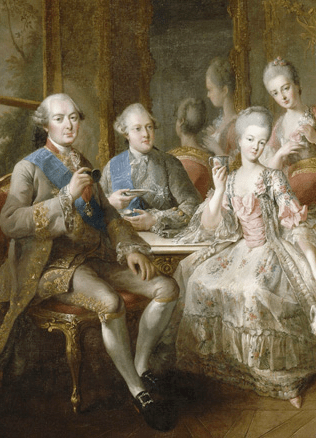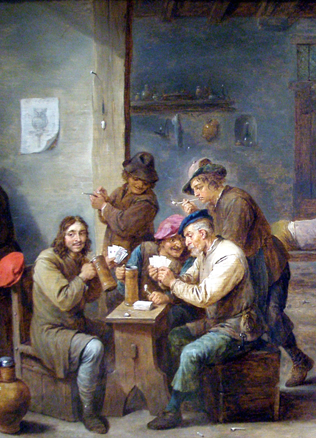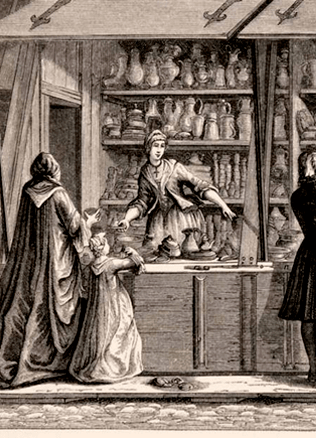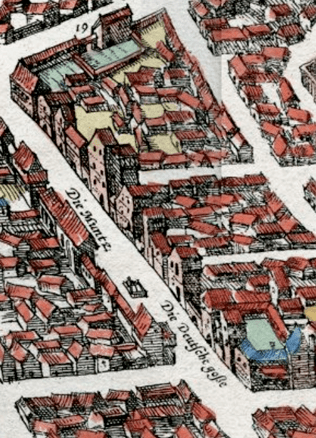Beer production: a short story of one more way of Europeanisation of the Lithuanians
All societies that grew cereals (especially barley) produced a fermented barley beverage – beer. The ancient Egyptians, the peoples of Mesopotamia, the Greeks and the Romans knew its recipes. It is true, the representatives of the latter two European cultures spoke about their brewing with contempt.
A freed man of antiquity considered beer to be a drink of serfs and barbarians (from his point of view these definitions were almost synonyms).
Even in the early Middle Ages when relations with the antique culture almost broke off, beer was not the most important or most favourite drink. Wine was more popular in the south of France, and alcoholic beverages made from mead were more desirable in Northern Europe. True, beer was brewed and drunk but most probably when there was a shortage of wine or mead. It was only at the beginning of the 19th century that a new beer brewing tradition formed according to which most kinds of modern beer are brewed. The use of hops, as a preservative, was the most important improvement, which gave beer a peculiar taste. This technological innovation gradually began to spread and throughout the early modern times became established in Europe.
Did the ancient Balts know any beer brewing recipes? On the one hand, prehistorical beer producing experience in the culture of the ancient Balts is testified to by linguistic monuments. The word is common to both current Baltic languages (Lithuanian and Latvian). The Prussians also knew this word. The root of this word is common in the words of other languages, which mean beer: English ale, Scandinavian öl, øl, in the church Rus’ language олъ. But in the neighbouring Slavic countries (Russia and Poland) a new word meaning beer appeared in the 14th–15th centuries – пиво, piwo. It might be that a change in the name was determined by new beer brewing technologies. On the other hand, production of modern beer is inseparable from growing barley, and the achievements of the Balts in barley growing until the middle of the 16th century are really doubtful because agricultural machinery and crop rotation were not developed yet.
Centuries-old traditions of drinking
In the Middle Ages the Lithuanians, like any other nation, intoxicated itself by drinking alcoholic beverages. In the first half of the 14th century the historian Peter von Dusburg when describing the customs of the Balts (Prussians, in particular) did not mention beer: “They drink pure water, mead wine or mead, as well as koumiss. (…) They did not know any other drinks in olden times. (…) They think that they a guest was not welcome heartily enough if he did not drink until he became intoxicated. They have a custom to bet that that everybody will drink equally and to excess at a feast therefore the hosts offer a guest to drink on this condition so that they could keep their word and a certain amount is drunk; such drinking-sprees last for a long time until all become drunk: guests together with the hosts, wife and her husband, a son and a daughter.” The sources and research done by the historians show that the Balts had their own drinking culture in their communities, which manifested itself during family and regularly repeating feasts – occasions.
Do You Know?
In the first half of the 14th century the historian Peter von Dusburg when describing the customs of the Balts (Prussians, in particular) did not mention beer: “They did not know any other drinks in olden times. (…) They think that they a guest was not welcome heartily enough if he did not drink until he became intoxicated. They have a custom to bet that that everybody will drink equally and to excess at a feast therefore the hosts offer a guest to drink on this condition so that they could keep their word and a certain amount is drunk; such drinking-sprees last for a long time until all become drunk: guests together with the hosts, wife and her husband, a son and a daughter.”
The most significant events in a person’s life were “consolidated” by drinking.
Alongside the already-mentioned treatment of guests, the customs of magaryčios (a custom to drink together with witnesses after something has been bought), pasėdis (periodical entertainment of the master), wedding (drinking after the newlyweds are officially met), the wake (drinking in honour of the souls of the dead). All these customs have survived up to the present day. Reliable but late information about these feast show that beer was drunk during them. Therefore, it is often thought that beer had to be drunk in pre-Christian times too. A good example is a custom of public drinking of samberinis beer (made of jointly poured corn). Its detailed description reached us from Samogitia of the year 1596: “He bought half a barrel of beer for 9 Lithuanian groats for himself and his friends and brought it to a location called Alkai on the bank of the Jaugelė river, to that Alkai place where all good people gather on a holy day Sunday. When he started to drink that half a barrel of beer together with the good people (…) a resident of Samogitia Jozef Stanislawowicz, having come up to him (…) cursed him and offended him using disgraceful words (…) called him a son of a dirty lay. And after that, nobody knows why, he seized that half the barrel of beer (…) from the cart.”“ It seems that everything in this description breathes of the hoary past: the 16th-century field is a living space of one family that appeared before the State was created; alkas (a sacrifice hill) is an old sanctuary of the family, which existed in the epoch of Christianity as a place of family gatherings. Hence, beer had to be an important attribute of such feasts.
The last blow at the beer and mead contest
The word alu (beer) meant mead in the so-called Elbing German-Prussian Dictionary compiled in the 14th century. This explains the reason why, around the time of compiling the dictionary, Peter von Dusburg mentions only mead rather than beer.
It is thought that the Balts could use the word alu, alus to refer to alcoholic drinks made of different raw materials on the whole.
A hint about that can be found in the Gerard Merkator Atlas compiled at the end of the 16th century. The description presented there mentions local beer: “beer is brewed in the most different ways from different kinds of corn (wheat, rye, barley, oats, groats of millet), but is absolutely tasteless.”
There is no reason to think that the Balts did not know beer brewing technologies before baptism. Simply in those times beer was not popular. Mead outstripped it in popularity even after baptism. The best indicator of that is the development of the network of inns. As far back as the beginning of the 16th century, mead and beer inns in the Grand Duchy of Lithuania were often mentioned side by side. However, in the first half of the 16th century a rapid growth in the number of the population, mass cutting of forests and the extension of the areas under crops encouraged by the Valak reform carried out in the middle of the century meant a decrease in the area of forests and disappearance of wild-bee keeping in hollow trees. On account of these reasons, mead was replaced by beer on the tables of the Lithuanians: mead became rarer and rarer and more expensive. At the same time the number of mead inns decreased, and the number of beer inns increased.
The first descriptions of brewing Lithuanian beer reached us from that period. Jan Lasicki who received information from the surveyor of volloks Jakob Laszkowski wrote about beer production in Samogitia in the middle of the 16th century as follows: “This beverage is made from water, corn and hops in the vessels made of tree barks: heated stones are put into these vessels and the beverage is heated throughout the night and mash is obtained, and the following day it is drunk.” Attention should be paid to several circumstances: hops are already seen in the recipes of Samogitian beer. It is known from other sources that at the end of the 15th century hops were already planted in Lithuania. On the other hand, not later than the middle of the 16th century, the use of archaic tuns made of tree barks in a beer brewing process was replaced by large copper tuns often mentioned in the inventories of larger estates in the second half of the 16th century. When they started to be used there was no sense to trouble oneself with heated stones and the vessels made of a tree bark, which became worn out very soon in the beer brewing process.
Literature: Petras Dusburgietis, Prūsijos žemės kornika, vertė L. Valkūnas, Vilnius, 1985, p. 88–89; K. Jablonskis, Apie XVI amžiaus ūkininkų alaus apeigas, To paties, Lietuvių kultūra ir jos veikėjai, Vilnius, 1973, p. 366–370; A. Astrauskas, Per barzdą varvėjo. Svaigiųjų gėrimų istorija Lietuvoje, Vilnius, 2008.
Eugenijus Saviščevas



